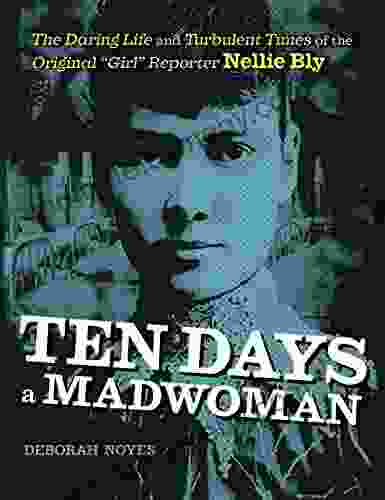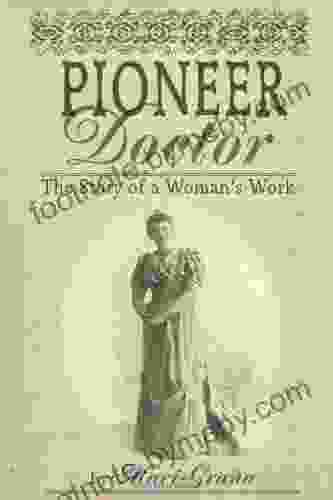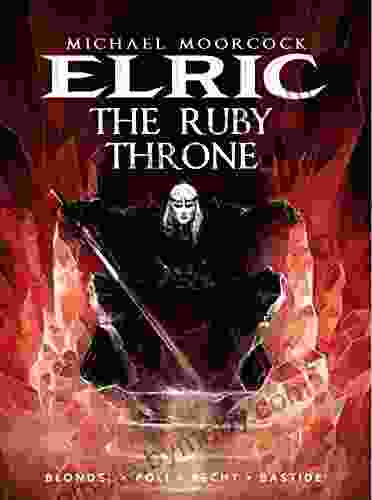The Story of Woman Work: A Historical Perspective on Women's Labor

Women have always worked. From the earliest days of human civilization, women have been responsible for gathering food, preparing meals, raising children, and caring for the sick and elderly. In many cultures, women have also played a vital role in agriculture, trade, and other economic activities.
However, the history of women's work is often overlooked or marginalized. This is due in part to the fact that women's work has often been unpaid and undervalued. In addition, women's work has often been seen as less important than men's work, even when it is essential to the functioning of society.
4.4 out of 5
| Language | : | English |
| File size | : | 3110 KB |
| Text-to-Speech | : | Enabled |
| Screen Reader | : | Supported |
| Word Wise | : | Enabled |
| Print length | : | 360 pages |
| Lending | : | Enabled |
The Story of Woman Work is a comprehensive history of women's labor, from the earliest days of human civilization to the present day. This book explores the many different roles that women have played in the workforce, from farmers and artisans to factory workers and professionals. It also examines the challenges that women have faced in the workplace, including discrimination, harassment, and unequal pay.
The Story of Woman Work is an essential read for anyone who wants to understand the history of women's rights and the role that women have played in shaping our world.
The Early History of Women's Work
The earliest evidence of women's work dates back to the Stone Age. During this time, women were responsible for gathering food, preparing meals, and making clothing. They also played a vital role in the development of agriculture, as they were the ones who first domesticated plants and animals.
In many ancient cultures, women were also involved in trade and other economic activities. In Egypt, for example, women were active in the textile industry and in the production of food and other goods. In Greece, women were involved in the production of pottery, clothing, and other goods. And in Rome, women were involved in a wide range of economic activities, including trade, banking, and manufacturing.
The Middle Ages
During the Middle Ages, women's work was largely confined to the home. However, there were some exceptions to this rule. In some parts of Europe, women were involved in agriculture and other economic activities. And in some towns and cities, women were able to work as artisans or merchants.
Despite these exceptions, the vast majority of women's work during the Middle Ages was unpaid and undervalued. This was due in part to the fact that women were seen as inferior to men and their work was not considered to be as important as men's work.
The Early Modern Period
The early modern period saw a significant increase in the number of women who worked outside the home. This was due in part to the growth of the textile industry, which created a demand for female labor. In addition, the rise of capitalism led to a decline in the traditional family economy, which forced many women to seek paid employment.
During the early modern period, women worked in a wide range of occupations, including agriculture, manufacturing, and service. However, they continued to face discrimination and unequal pay. In addition, women were often subjected to sexual harassment and other forms of abuse.
The 19th Century
The 19th century was a time of great change for women's work. The Industrial Revolution created new opportunities for women in the workforce, but it also led to new forms of exploitation. Women worked in factories, mines, and other dangerous and unhealthy conditions. They were also paid less than men for the same work.
Despite these challenges, women continued to fight for their rights in the workplace. In the United States, women won the right to vote in 1920. And in the United Kingdom, women won the right to vote in 1928.
The 20th Century
The 20th century saw a further expansion of women's work. Women entered the workforce in large numbers during World War II, when they were needed to fill jobs that had previously been held by men. After the war, many women continued to work outside the home, even as they faced discrimination and unequal pay.
In the 1960s and 1970s, the feminist movement led to a renewed focus on women's rights in the workplace. Women won the right to equal pay for equal work and the right to be free from discrimination based on sex. These gains have made it possible for women to achieve greater economic independence and to participate more fully in society.
The 21st Century
Today, women make up nearly half of the workforce in the United States. They work in a wide range of occupations, from doctors and lawyers to teachers and engineers. However, women still face challenges in the workplace, including discrimination, harassment, and unequal pay.
The Story of Woman Work is a reminder of the important role that women have played in the workforce throughout history. It is also a reminder of the challenges that women have faced and the progress that has been made. As we continue to work towards gender equality, it is important to remember the women who came before us and fought for our rights.
The Story of Woman Work is a powerful and inspiring account of the many contributions that women have made to the workforce throughout history. It is a must-read for anyone who wants to understand the history of women's rights and the role that women have played in shaping our world.
4.4 out of 5
| Language | : | English |
| File size | : | 3110 KB |
| Text-to-Speech | : | Enabled |
| Screen Reader | : | Supported |
| Word Wise | : | Enabled |
| Print length | : | 360 pages |
| Lending | : | Enabled |
Do you want to contribute by writing guest posts on this blog?
Please contact us and send us a resume of previous articles that you have written.
 Book
Book Novel
Novel Page
Page Chapter
Chapter Text
Text Story
Story Genre
Genre Reader
Reader Library
Library Paperback
Paperback E-book
E-book Magazine
Magazine Newspaper
Newspaper Paragraph
Paragraph Sentence
Sentence Bookmark
Bookmark Shelf
Shelf Glossary
Glossary Bibliography
Bibliography Foreword
Foreword Preface
Preface Synopsis
Synopsis Annotation
Annotation Footnote
Footnote Manuscript
Manuscript Scroll
Scroll Codex
Codex Tome
Tome Bestseller
Bestseller Classics
Classics Library card
Library card Narrative
Narrative Biography
Biography Autobiography
Autobiography Memoir
Memoir Reference
Reference Encyclopedia
Encyclopedia Deborah Falaye
Deborah Falaye David Rebedew
David Rebedew Darryl Cunningham
Darryl Cunningham Jill Cooper
Jill Cooper David Kerr
David Kerr Paul E Hardisty
Paul E Hardisty David A Ebert
David A Ebert Caitlind Alexander
Caitlind Alexander David James Smith
David James Smith David A Kelly
David A Kelly John Kreiter
John Kreiter David S Abraham
David S Abraham David E Wilkins
David E Wilkins Darwin V Ellis
Darwin V Ellis David Crabtree
David Crabtree David J Dunford
David J Dunford David Lang
David Lang David Wolman
David Wolman David H Ross
David H Ross Jeff Brent
Jeff Brent
Light bulbAdvertise smarter! Our strategic ad space ensures maximum exposure. Reserve your spot today!

 Osamu DazaiThe Simple Truth: A Complex Tapestry of Secrets, Redemption, and the Power of...
Osamu DazaiThe Simple Truth: A Complex Tapestry of Secrets, Redemption, and the Power of... Carlos FuentesFollow ·13.6k
Carlos FuentesFollow ·13.6k Chase MorrisFollow ·19.7k
Chase MorrisFollow ·19.7k Dashawn HayesFollow ·3.8k
Dashawn HayesFollow ·3.8k Milan KunderaFollow ·6k
Milan KunderaFollow ·6k Jesse BellFollow ·10.9k
Jesse BellFollow ·10.9k Mario BenedettiFollow ·9.8k
Mario BenedettiFollow ·9.8k Todd TurnerFollow ·16k
Todd TurnerFollow ·16k Christian BarnesFollow ·8.5k
Christian BarnesFollow ·8.5k

 Jayden Cox
Jayden CoxFaith Lies and the War on Terror: Exposing the Truth...
In the aftermath of the 9/11...

 Jack Powell
Jack PowellMad About the Trump Era: Mad Magazine 2024
The Trump...

 Warren Bell
Warren BellYou Got This: Tips for Women Who Want to Rock at Real...
Real estate...

 Ernest Cline
Ernest ClineThe Daring Life and Turbulent Times of the Original Girl...
: Embracing the Spirit of Adventure In...
4.4 out of 5
| Language | : | English |
| File size | : | 3110 KB |
| Text-to-Speech | : | Enabled |
| Screen Reader | : | Supported |
| Word Wise | : | Enabled |
| Print length | : | 360 pages |
| Lending | : | Enabled |














